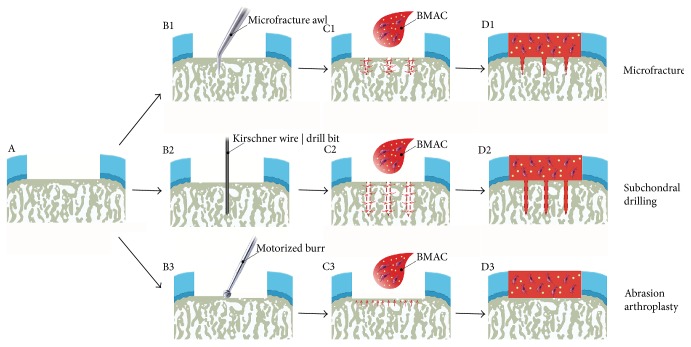Figure 1.
Principle of bone marrow aspirate concentrate- (BMAC-) enhanced marrow stimulation. (a) Schematic view of a full-thickness focal chondral defect. (b) Marrow stimulation can be performed with microfracture (b1), subchondral drilling (b2), or abrasion arthroplasty (b3). The subchondral bone plate can be perforated with a microfracture awl (microfracture), a Kirschner wire or a drill bit (subchondral drilling), or a motorized burr (abrasion arthroplasty) (c). After marrow stimulation, bone marrow containing mesenchymal stem cells ascends from the marrow cavity of the underlying subchondral bone via the channels generated by the marrow stimulation procedures. The defects are filled with a clot of autologous BMAC, containing mesenchymal stem cells and growth factors which possibly favor new tissue formation. (d) Defects thus contain bone marrow both from the subchondral bone and the additional BMAC application, and gradually a cartilaginous repair tissue forms within them. Red dashed lines (c1, d1, c2, and d2) show the outline of holes created by microfracture and subchondral drilling. Red arrows (c1, c2, and c3) within the subchondral bone denote the migration direction of the liquid bone marrow.

